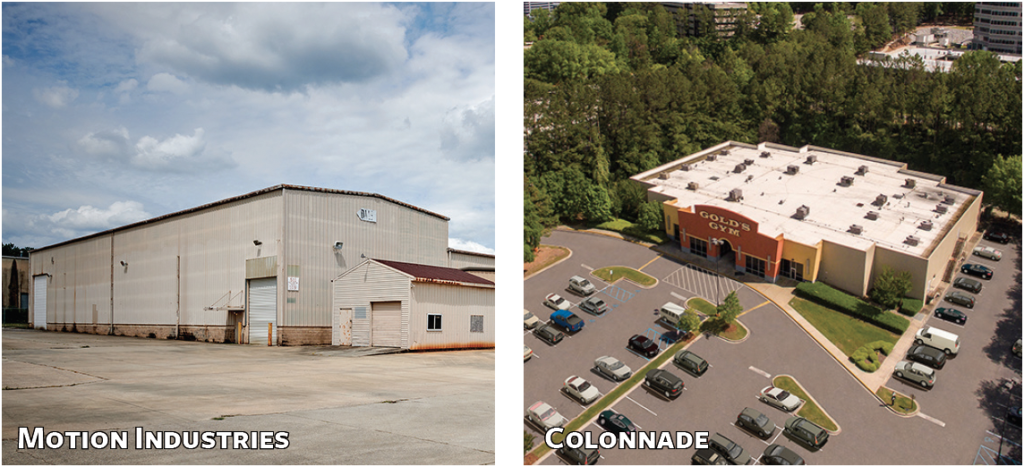I don’t know about you, but for me the election can’t get here quick enough – heck, 2021 can’t get here fast enough.
This past quarter has been a good one at Shannon Waltchack. Leasing activity has increased portfolio-wide. We backfilled the Gold’s Gym vacancy at the Colonnade. We closed on a 180,000 SF Motion Industries distribution facility in Irondale.

Every year I look forward to when the Urban Land Institute (ULI) releases its Emerging Trends in Real Estate. Recently they released their 2021 edition. Here’s the link for the 111 page document.
I’d like to highlight 4 of their 10 trends for 2021:
1. THE GREAT AMERICAN MOVE
Historians who study pandemics tell us that these events tend to accelerate existing trends in population behavior. As more millennials are getting married, they’re moving from dense urban environments to the suburbs. The difficulties of living amid COVID-19 in a crowded city center probably caused this trend to triple in speed.
Beyond urban vs. suburban, Americans are also changing locales. A fantastic tool to understand geographic shifts is to look at the premium U-Haul charges its customers for moving to certain cities. Since most U-Haul rentals are one-way, they charge a premium to move to cities where they have a surplus of vehicles. Cities which have this premium are experiencing ‘in-migration’ and cities where there’s a discount are experiencing ‘out-migration’.
Cities like Nashville, Atlanta, Jacksonville, Tampa, Dallas, Austin, Charlotte and Raleigh have the higher premiums.
Conversely, Chicago, Philadelphia, Boston, New York City, Baltimore, San Francisco and Los Angeles have the larger discounts. The greater sunbelt looks like it will continue to grow into the foreseeable future.
2. AFFORDABLE HOUSING CRISIS LIKELY TO EXPLODE WITHOUT INTERVENTION
Ask any homebuilder or apartment developer and they will tell you there is a severe lack of affordable housing in the US. From the land of unintended consequences, the steady decline in interest rates since the 80s has actually made the problem worse. The lower the interest rate, the more a buyer can pay for a home. And as home values have soared, many lower income families have been effectively priced-out of home ownership.
Rental options aren’t much better. The majority of new apartment construction has been targeted to the ‘renter by choice’ segment which is high on amenities and high monthly rents.
The solution will require cooperation between federal and local authorities to lower input costs for developers to be able to provide an affordable product while making profit.
3. FROM JUST-IN-TIME TO JUST-IN-CASE
Just-in-Time manufacturing had its genesis in Japan during the 1970s. Since then manufacturers around the world have tried to create the leanest supply chain possible. Think of it like a finely tuned machine made up of hundreds of parts.
COVID-19 broke the machine. All of the sudden manufacturers realized the system they created was fairly brittle in the face of both a pandemic and a trade war. The lean supply chain actually needs some buffer and perhaps some redundancy.
Manufacturers had already started to implement on-shoring or near-shoring production and this trend will intensify. Look for places in the US which have low cost of living and a well-educated workforce to benefit the most. Mexico and South American countries will also grow their manufacturing bases.
Don’t be surprised to see a tri-polar world emerge over the next couple of decades. North and South America will likely become a more integrated trading block competing with Europe+Africa and Russia+Asia.
4. ACCELERATING THE RETAIL TRANSFORMATION
The next few years promise to be “retail’s great transition period”.
Retail is a big word that encompasses many different types of shopping activities. An easy framework to understand what’s occurring in the retail world uses 3 different shopping time frames- Monthly, Weekly and Daily.
Monthly Shopping tends to center around large annual events on the calendar, things like back-to-school, preparations for trips, birthdays & holidays. This type of shopping happens at malls, power centers and of course on-line. In fact, this category has felt the largest impact by
e-commerce. This trend will only get stronger.
Weekly Shopping encompasses groceries and home disposables that need to be constantly restocked. Consumers visit grocery-anchored centers and discounters like Walmart and Target. Online shopping has made small dent into this category, but it’s unclear how far this will go.
Daily Shopping includes services like hair/nail salons, dentists, spas, physical therapists, primary/urgent care doctors and restaurants. The commonality among daily shopping is that consumers must be physically present to receive services from these retailers. Due to this need, e-commerce can’t effectively compete in this category. This is where Shannon Waltchack wants to compete.
Clearly, the majority of the retail carnage has already happened to malls and big box centers. I think we’ll see 50% or more of remaining malls in the US close in the next couple years. This will also hurt the surrounding retail centers. But the good news is that COVID-19 will make all this change happen in a shorter amount of time. The sooner these assets can be converted to new productive uses, the sooner local municipalities can recover their tax base.
In closing, I want to spend a little time bragging about one of my partners. On October 29, Tim Blair, will be inaugurated as Alabama’s first CCIM Global President, serving through 2021. For those unfamiliar with the designation, CCIM is commercial real estate’s gold standard for professional achievement.
Tim has been a partner at Shannon Waltchack since 2010. He has been an essential ingredient in our growth and successes.
Tim likes to bring the ‘fun’ to our work life. For example, he’s planned and hosted SW’s Annual Lake Olympics for the past 7 years. Always one of the highlights of the year, we break the company into teams and compete in camp-style events such as Saltine Whistle, Dizzy Bat, Water Balloon Toss and of course, Chubby Bunny.
Tim is one of our best problem solvers. Whether we identify a property in our portfolio that needs extra attention due leasing issues, or we need to pivot to a virtual office like on the weekend of March 13th, Tim’s talents shine through.
Personally, Tim makes me a better practitioner. He has a professionalism that is contagious. Because Tim is the room, I want to be a better partner.
I asked the other partners to submit a sentence or two on Tim for this publication:
- “Tim strives for excellence in everything. No matter the situation, his dedication and commitment are unparalleled.” – Seth Berry
- “Tim is a selfless partner. He always puts the organization and others before himself. And he is good at challenging us and/or the status quo.” – Andrew Patterson
- “Tim has been on more boards than anyone I know. He brings years of wisdom to our partnership and has the unique ability to distill complicated problems into simple solutions. He is the one we go to when we have problems that need solutions.” – Len Shannon
- “Tim Blair has an easy-going personality with a big heart! He brings an intellectual approach to our company and has the ability to really focus on a task when it is needed. He also is able to easily see the big picture and seems to be able to bring a different perspective to solving a problem. He will always do the right thing even if it means losing money.” – John Hardin
We are all thankful to have Tim on our team. And we wish him luck while he’s piloting CCIM through 2021.
I hope that each of you have a peaceful and happy Holiday season. And I pray that our country can truly find some peace after the election.
Thankful,
Derek Waltchack


